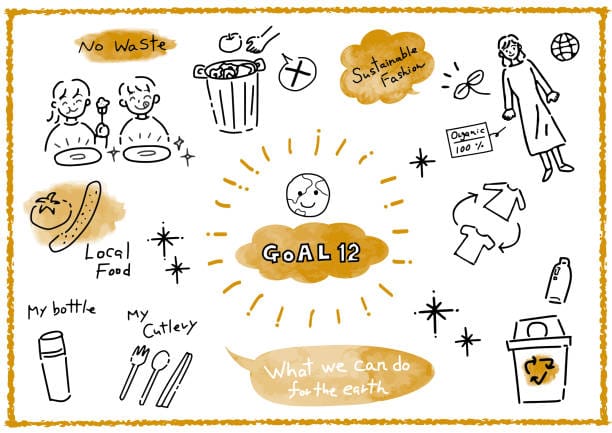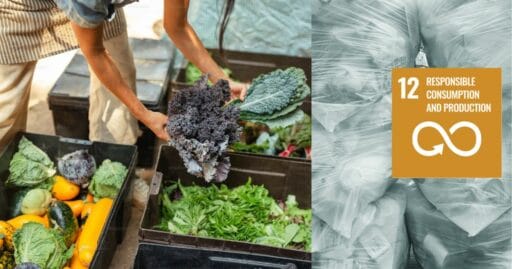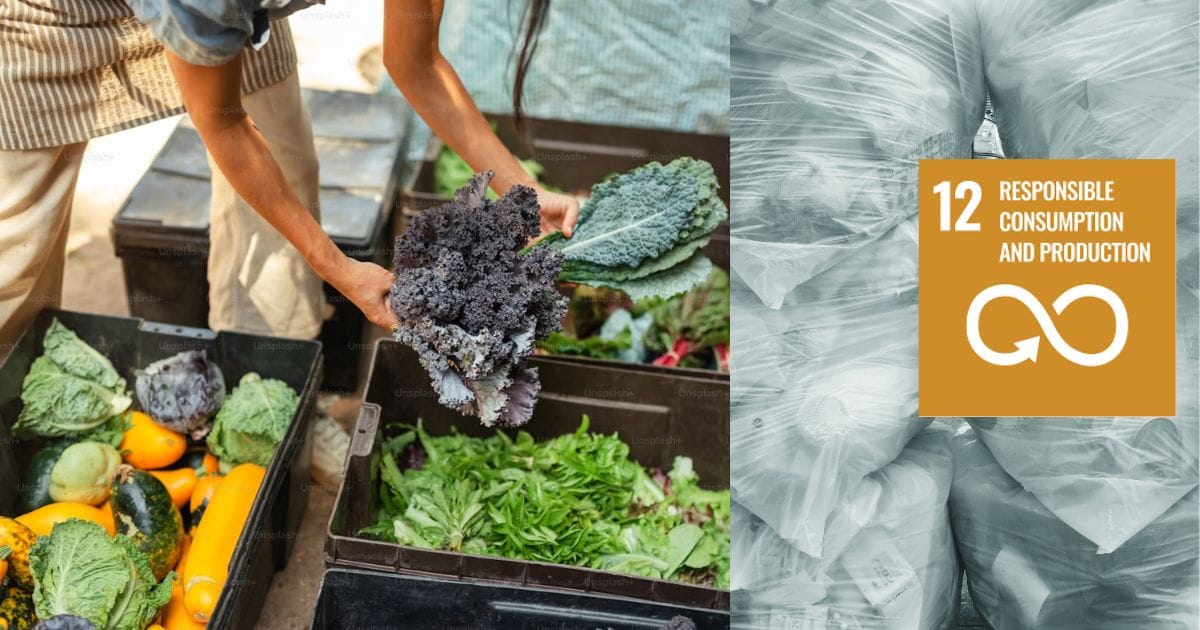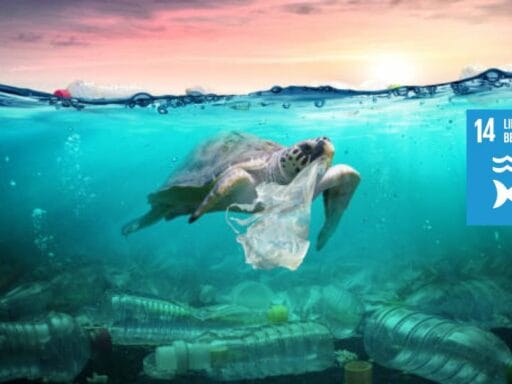In an era where human consumption and production practices have put enormous strain on the earth, the United Nations’ SDG Goal 12 (Sustainable Development Goal 12) stands out as an urgent call to action. This objective, which focuses on responsible consumption and production, seeks to decrease waste, encourage sustainable behaviors, and mitigate environmental deterioration.
Achieving Goal 12 is critical for combating climate change, protecting ecosystems, and ensuring that resources are accessible for future generations. With global consumption expected to quadruple by 2050, adopting sustainable production and consumption strategies is no longer an option; it is an absolute must.
What is SDG Goal 12?
SDG 12th goal concerns sustainable consumption and production practices. It aims to divorce economic growth from resource use and environmental degradation, so guaranteeing a balance between development and sustainability.
The key objectives include:
- Efficient resource use: Encouraging companies to maximize resource use.
- Waste reduction initiatives include recycling, composting, and minimizing reliance on landfills.
- Promoting sustainability in policies: Governments and companies are pushed to include sustainability into their decision-making processes.
This objective targets the core source of environmental issues—unsustainable production and consumption—by creating systems that prioritize long-term ecological health over short-term profits.
Targets and Indicators of SDG Goal 12
SDG Goal 12 is defined by ambitious targets that guide global efforts toward sustainability.
- Sustainable Management of Resources
Industries are urged to implement environmentally friendly practices and resource-efficient technology. Indicators measure material footprint and per capita resource use. - Halving Global Food Waste
About one-third of all food produced is wasted. Reduced food loss at the manufacturing and retail sectors, as well as consumer waste, is a major priority. - Environmentally Sound Management of Chemicals
The objective is decreasing hazardous waste and maintaining safe chemical handling to prevent health and environmental dangers. - Sustainable Corporate Practices
Companies are encouraged to include sustainability into their reporting cycles, therefore increasing openness and responsibility. - Sustainable Public Procurement
Governments are urged to use sustainable procurement techniques to increase demand for environmentally friendly goods and services.

Challenges
Overconsumption
Excessive consumption, especially in industrialized countries, strains resources and generates substantial waste. Balancing economic goals with sustainable consumption habits remains a significant problem.
Inefficient Resource Use
Many sectors rely on resource-intensive manufacturing processes, resulting in avoidable environmental harm. Transitioning to sustainable technology necessitates significant investment and innovation.
Lack of Awareness
A lack of understanding between consumers and companies about the environmental consequences of their decisions stymies development. Education and advocacy are critical for promoting sustainable behaviors.
Policy Gaps
Inconsistent rules and lax enforcement of sustainability standards impede attempts to fulfill SDG Goal 12. Collaboration among governments and stakeholders is required to solve this issue.
Practical Steps to Advance SDG Goal 12
- Promoting Circular Economy Models
Transitioning to a circular economy, where resources are reused, repaired, and recycled, reduces waste and conserves materials. - Encouraging Eco-Friendly Consumption
Consumers can reduce their environmental impact by opting for energy-efficient appliances, avoiding single-use plastics, and supporting ethical brands. - Implementing Sustainable Business Practices
Companies can adopt sustainable supply chains, invest in green technologies, and reduce their carbon footprint to contribute to SDG Goal 12. - Strengthening Policies and Regulations
Governments can introduce incentives for sustainable businesses, tax breaks for eco-friendly practices, and stringent penalties for pollution.
Case Studies
Case Study 1: Japan’s Circular Economy
Japan has been a pioneer in implementing circular economy ideas. The country’s Home Appliance Recycling Law compels manufacturers to recycle old equipment, which considerably reduces landfill trash. Japan also supports a culture of mending and reusing products, which reduces consumer waste. This strategy has positioned the country as a leader in sustainable consumption and production.
Case Study 2: Sweden’s Sustainable Food Practices
Sweden has developed regulations to decrease food waste, including public awareness campaigns and incentives for food donations. The country’s innovative food applications connect users with leftover food at low costs, solving food insecurity and reducing waste. Sweden’s experience demonstrates how focused measures may eliminate waste while promoting sustainability.
FAQs
1. What is SDG Goal 12 about?
SDG Goal 12 promotes sustainable consumption and production patterns to minimize environmental harm and ensure resource availability for future generations.
2. Why is SDG Goal 12 important?
It addresses critical challenges such as waste, pollution, and resource depletion, fostering economic growth while protecting the planet.
3. What are the challenges in achieving SDG Goal 12?
Overconsumption, inefficient resource use, and policy gaps are significant hurdles to achieving this goal.
4. How can individuals contribute to SDG Goal 12?
By reducing waste, recycling, and supporting sustainable brands, individuals can contribute to responsible consumption and production.
5. What role do businesses play in SDG Goal 12?
Businesses can integrate sustainability into their operations, adopt circular economy models, and promote transparent reporting to align with SDG Goal 12.
Fherist Services
Fherist actively promotes SDG 12 by providing new solutions for sustainable development. Resource Efficiency Consulting, assisting organizations in optimizing resource consumption, reducing waste, and implementing environmentally friendly manufacturing practices. Sustainability advocacy include running campaigns to promote awareness about responsible consumption and the value of recycling. Eco-Innovation entails creating technology and tools that encourage circular economy practices, such as waste-to-energy solutions and recycling programs.
Fherist’s holistic strategy enables businesses and communities to embrace sustainability and make substantial contributions to SDG Goal 12.
Conclusion
SDG Goal 12 requires not only solving environmental concerns, but also changing economies, businesses, and lifestyles for a more sustainable future. This objective requires governments, corporations, and individuals to work together to reduce waste and promote resource efficiency.
Organizations such as Fherist, with their inventive and focused initiatives, demonstrate the transformational power of sustainable practices. Together, we can lead the transition to responsible consumption and production, guaranteeing a balanced and vibrant planet for future generations. Making conscious decisions now lays the groundwork for a resilient and sustainable future. Let us advocate SDG 12 and make the goal of a sustainable planet a reality.
Read More Here








